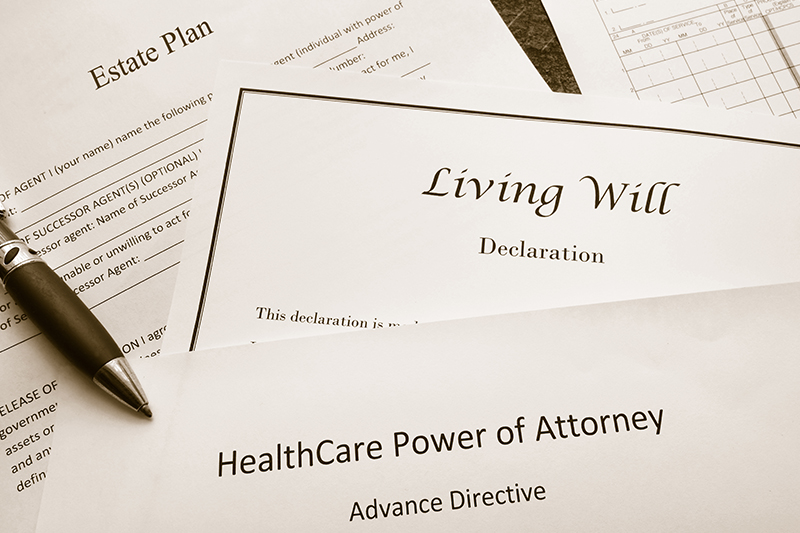A will can help you accomplish a number of important planning goals. For instance, it allows you to control how your assets are distributed after you pass away. Without a will, your assets will be distributed according to what is known as intestate succession, in accordance with strict guidelines set by the state. What you “would have wanted” is irrelevant to the state. Your assets must be distributed, and the state has devised a formula to do so. A will also gives you control over how your minor children will be raised if something terrible happens to you and your spouse. Your will allows you to name people of your choosing-people you trust-to raise and care for your children if you cannot. Without a will, the court will decide who has control over your children. The court’s decision could lead to your children being raised in a place and manner
Continue Reading... →Archive for the Blog Category
Last time we looked at the difference between Medicare and Medicaid. Now let’s look at how they differ with respect to long-term care planning. Medicare, by and large, does not cover long-term nursing home care. For example, Medicare Part A will only cover up to 100 days in a skilled nursing facility for a particular illness, and only after the patient has spent at least three days in a hospital. Worse, from day 21 to day 100, the individual in the skilled nursing facility must make a copayment of $167.50 per day. Few people actually receive Medicare coverage for the full 100 days, in part because of the copay, and in part because restrictions and conditions for coverage are quite stringent. Medicaid, on the other, does cover long-term nursing home care for people who meet its income and asset limits. 100 days, one year, five years-Medicaid will pay for the
Continue Reading... →An IRA Trust can help you control distributions after you pass away and restrict access to beneficiaries who might squander the funds of your IRA. How does an IRA Trust accomplish this? Let’s say your IRA is left directly to your beneficiaries outside of a trust. In this situation, your beneficiaries can immediately cash out your IRA and spend the money however they choose. The trouble is, when the IRA is cashed out, not only is the ability to stretch the required minimum distributions (RMDs) over the beneficiary’s lifetime lost, but all of the amount withdrawn will be taxable in the withdrawal year. Or consider this scenario: If you name a minor grandchild as the direct beneficiary of your IRA, a guardianship or conservatorship will need to be established to manage the IRA until he or she reaches the age of 18. Then, when the grandchild reaches 18, he or
Continue Reading... →Many people are confused about the difference between Medicare and Medicaid as it pertains to the challenge of paying for expensive long-term care. This is not surprising. The two programs sound similar and both provide for medical care. Let’s start with a brief definition of each program. Medicare is an entitlement program. Everyone who reaches the age of 65 and is eligible to receive benefits from Social Security can also receive Medicare. Medicaid, on the other hand, is a public assistance program. It is designed to help people with limited income and assets pay for medical care. Recipients of Medicaid assistance must meet certain income and asset guidelines. Another fundamental difference between the two programs is that Medicare is run entirely by the federal government whereas Medicaid is a joint federal-state program. Every state has its own Medicaid system, which helps explain why eligibility rules differ from one state to
Continue Reading... →What if you don’t start taking Social Security benefits until after your full retirement age? As you would expect, you’ll be rewarded for this. For example, if your full retirement age is 66, you’ll receive 108 percent of your monthly benefit by waiting until age 67. Wait until the age of 70 and your monthly benefit rises to 132 percent. So, based purely on the numbers, you can see why many advisors recommend waiting. Your benefit is significantly reduced the earlier you start taking it and considerably higher the longer you wait. Now, many people will say, understandably, that they worked long and hard to earn their benefit and want to start enjoying it as soon as possible. There are also certain situations where taking your benefit early makes financial sense. An article on bankrate.com points out that if you are in poor health, with a lower than average life
Continue Reading... →Approximately 20 percent of Americans over the age of 65 have been victimized by some form of financial abuse, with the average loss per victim exceeding $120,000. While financial abuse is sometimes perpetrated by family members or “friends,” it is often the result of organized online and telephone scams. According to a recent study by Wells Fargo, nearly half of all seniors report that they know someone who has fallen victim to a scam. The Social Security Administration has issued a warning about scammers who pose as employees of the agency in an attempt to gather personal information about seniors. In one such scam, a senior receives a phone call with a recorded message claiming that his or her Social Security number has been suspended for suspicious illegal activity. The message provides a phone number that the person must call to rectify the problem and to prevent his or her
Continue Reading... →Most advisors recommend waiting as long as possible to begin collecting Social Security benefits. Suze Orman, a contributor to AARP Magazine, makes a strong case for this approach. She argues that with people living longer than ever before, 70 is the new 65. What concerns her the most is not funding the first 10 to 15 years of retirement but rather the 10 to 15 years after that. You can read her entire article here. What do the numbers have to say? Of course, every situation is unique. The best time to take Social Security benefits is not the same for everyone. You must consider your particular financial needs, health, post-retirement plans and more in deciding when to take your benefit. Here are some statistics to help you make an informed decision. The first number you need to know is your full retirement age—the age at which you can collect
Continue Reading... →Irrevocable Living Trusts, when properly designed and implemented, can provide an almost unsurpassed level of asset protection from the high cost of long-term care. And, like Revocable Living Trusts, they spare your family the delays, frustration and expenses of the probate process. Other reasons to utilize an Irrevocable Living Trust include: Tax minimization Avoiding the risks of placing assets in the name of your children Protecting assets against predators, creditors and lawsuits While many different types of Irrevocable Living Trusts are available, in essence all of them re-title your assets. Assets placed in an Irrevocable Living Trust can include a business, cash, investments, life insurance policies, and more. Why is an Irrevocable Living Trust better than a Revocable Living Trust at protecting assets against the cost of long-term care? Under current Medicaid laws, assets in a Revocable Living Trust are not fully protected. Why? Assets in a Revocable Living Trust
Continue Reading... →Has your financial or medical situation changed since your plan was created? Have any of your children or grandchildren gotten divorced and remarried, or started families of their own? Do your beneficiary designations continue to reflect your wishes? What about the people you have chosen to make financial and medical decisions on your behalf—are they still willing and able to do so? Are all of your trusts properly funded? Your plan must take all of these issues, and more, into account for it to accomplish your goals. The fact is, an outdated or improperly designed plan is often worse than having no plan at all. We hope you’ll also take time to review your plan and update it to take into account any changes in your financial, medical and family situation. If you have any questions about your plan, don’t hesitate to reach out to us.
Continue Reading... →An article by AARP discusses several factors to consider when choosing a nursing home. Here is a brief synopsis. Inspect the grounds Are there outdoor sitting areas available and do the residents use them? Are dumpsters well concealed and relatively clean? Is it quiet or can you hear a lot of noise coming from traffic or some other source? Does it seem like you or your loved one would find the area relaxing and a nice place to sit? Talk to residents Ask residents if they like living at the facility. You can ask about the food, what a typical day is like, if there are activities and outings for residents, and whether the facility sponsors events for family members. The facility might be beautiful, but make sure the residents seem well cared for and content. Talk to the staff Ask people working at the facility about their jobs and
Continue Reading... →











